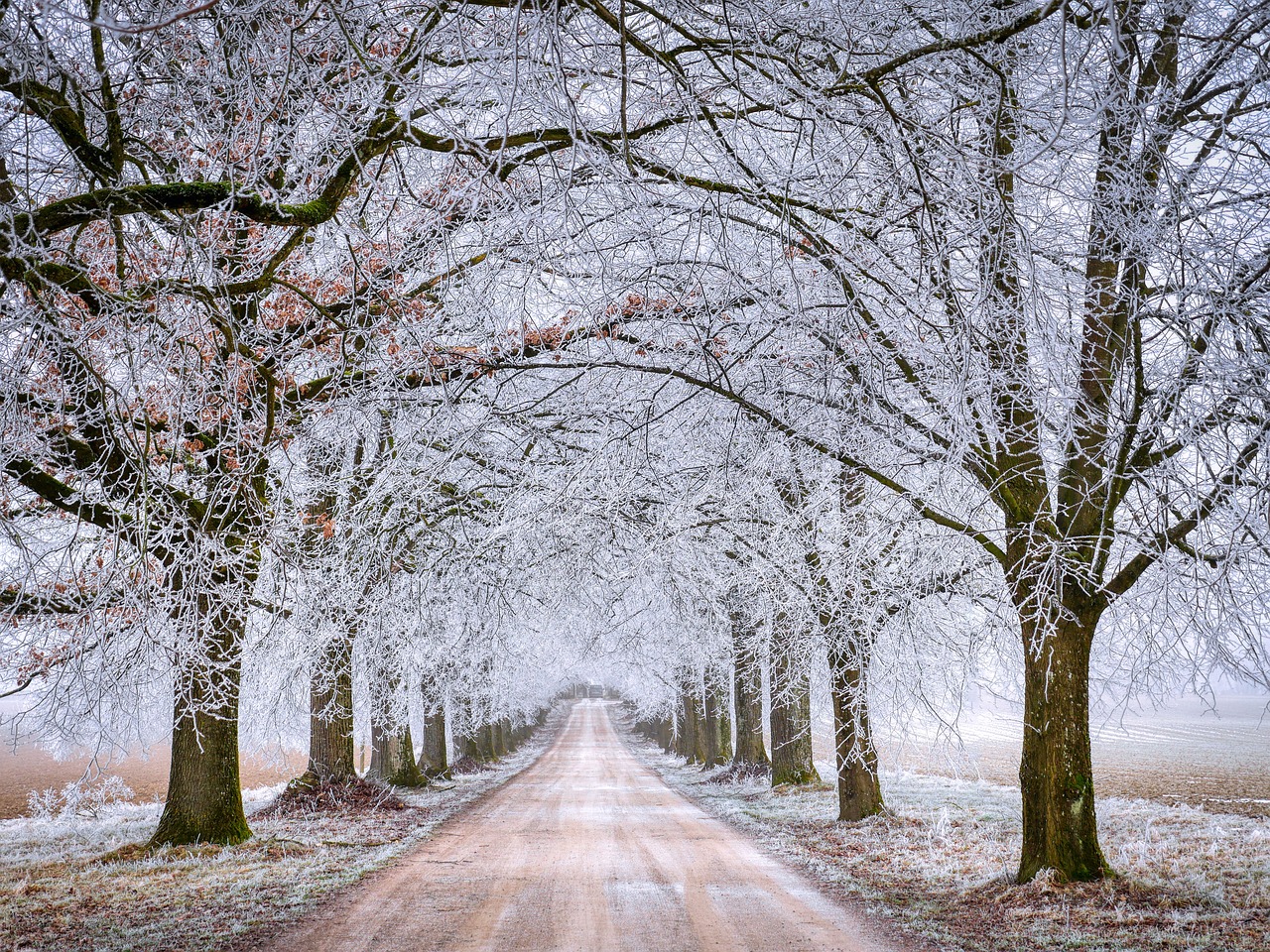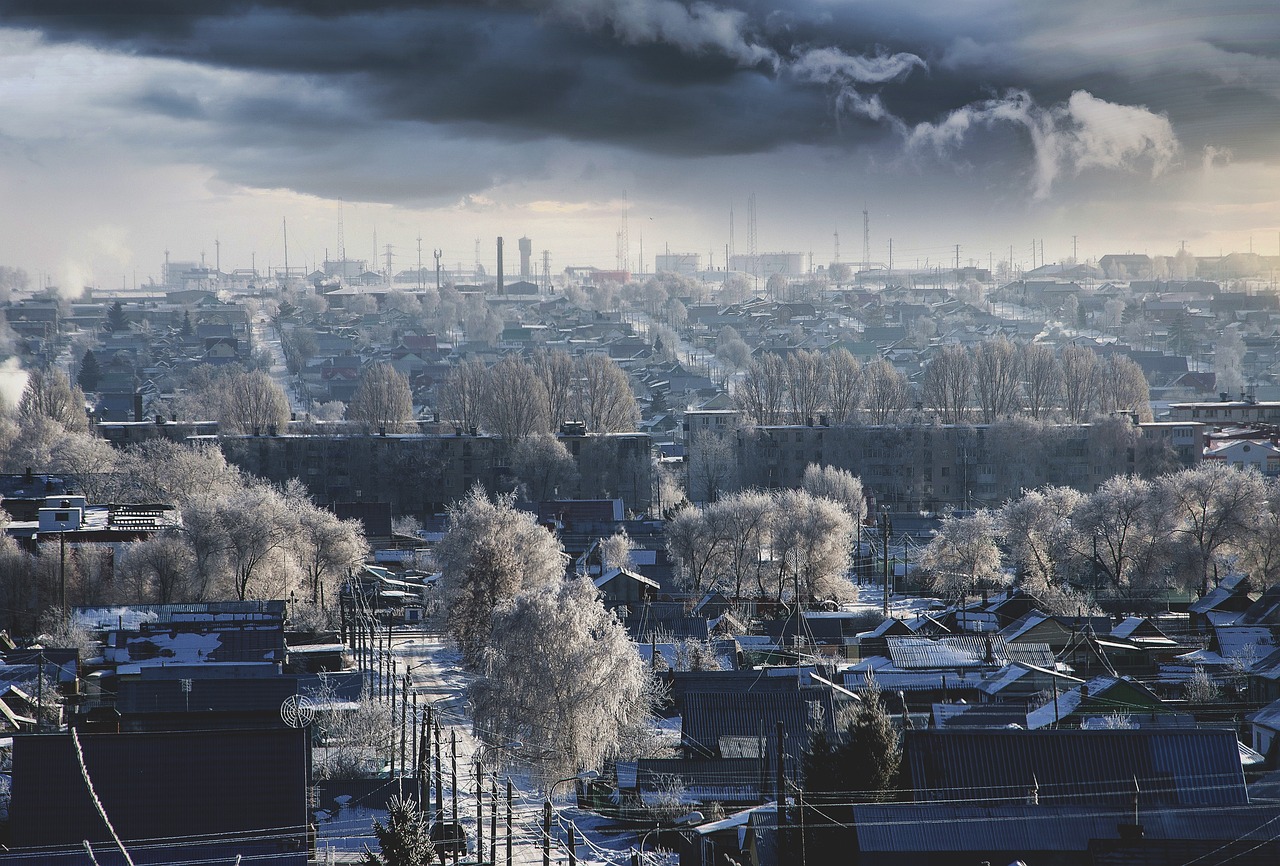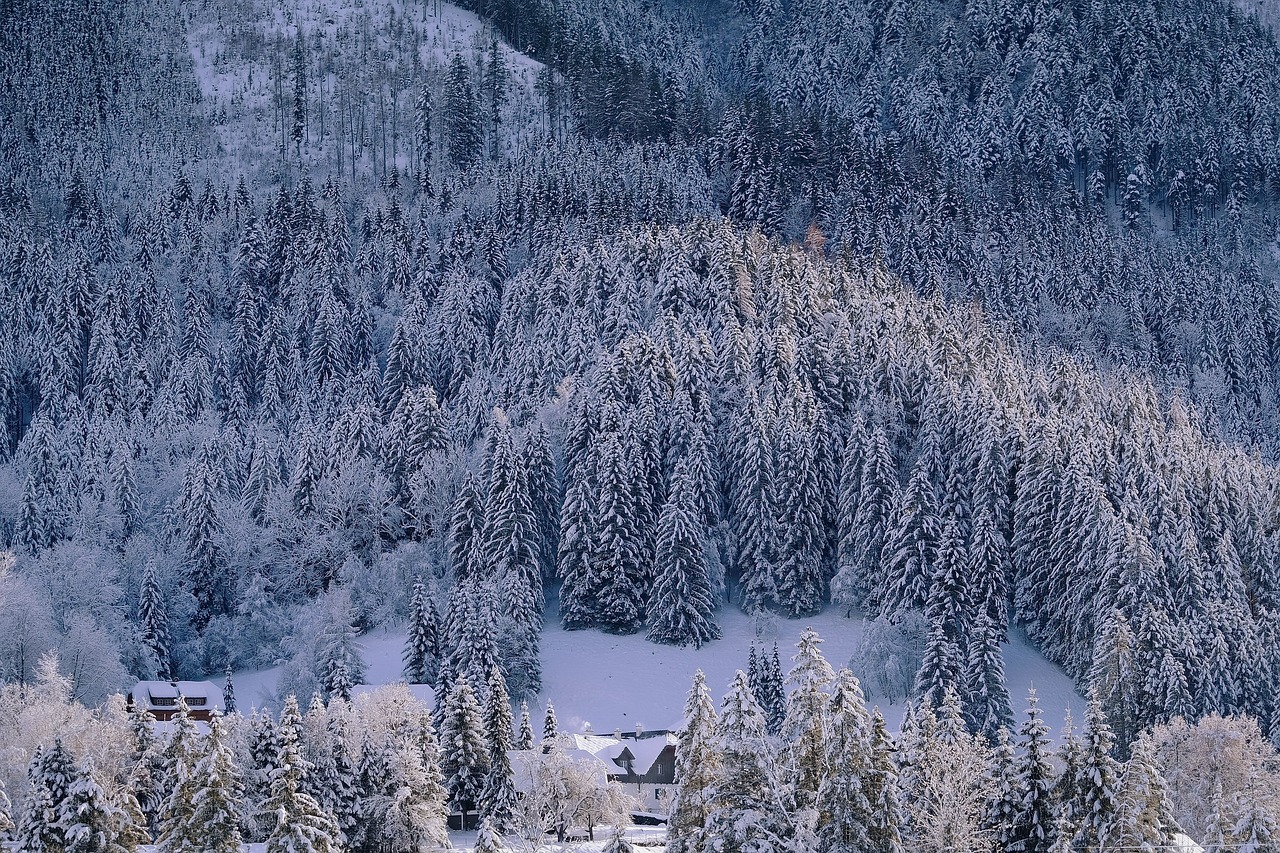How to Create a Garden That Thrives in Cold Climates
Creating a flourishing garden in cold climates may seem challenging, but with the right techniques and strategies, you can enjoy a vibrant outdoor space even in frosty conditions. One key aspect to consider is choosing cold-hardy plants that can withstand the low temperatures typical of chilly environments. Opt for winter vegetables like kale and carrots, evergreen shrubs such as juniper and boxwood, and frost-resistant flowers like pansies and snowdrops.
Optimizing the soil and drainage in your garden is essential for the health of your plants. Improve soil quality by adding organic matter, enhance drainage to prevent waterlogging, and use mulch to insulate roots from freezing temperatures. Testing the soil pH levels is also crucial to ensure that it is suitable for the plants you have chosen. Adjusting the pH levels as needed will promote optimal growth and nutrient absorption.
Protecting your plants from frost is paramount to their survival during cold spells. Implement strategies like covering plants with cloches or row covers to create a barrier against freezing temperatures. Building season extenders such as cold frames or greenhouses can provide additional protection and help prolong the growing season, giving your plants a head start in spring.
When it comes to watering your garden in cold climates, it's important to manage watering schedules carefully. Avoid overwatering in frozen conditions, as excess moisture can lead to root rot. Utilize techniques like deep watering to ensure that the roots receive adequate hydration without risking waterlogged soil.
Winterizing garden structures is another crucial step in preparing your outdoor space for the cold season. Reinforce trellises, fences, and raised beds to withstand snow, ice, and strong winds. By taking the time to secure these structures, you can prevent damage and ensure they remain intact throughout the winter.
Implementing frost-resistant landscaping elements can not only enhance the aesthetics of your cold-climate garden but also provide additional protection for your plants. Rocks, gravel, and hardscaping features are durable options that can withstand frost and add visual interest to your outdoor space. By incorporating these elements strategically, you can create a resilient and beautiful garden that thrives in cold climates.

Choosing Cold-Hardy Plants
When it comes to creating a garden that thrives in cold climates, selecting the right plants is crucial for ensuring their survival through frosty conditions. Cold-hardy plants are resilient species that can withstand low temperatures and even frost, making them ideal choices for chilly environments. These plants are specially adapted to survive and thrive in colder climates, providing beauty and greenery even when the weather turns icy.
One popular option for cold-hardy plants is winter vegetables, which can withstand frost and continue to grow even in the coldest months. These vegetables include hardy greens like kale and collard greens, root vegetables such as carrots and beets, and cold-tolerant herbs like parsley and thyme. By incorporating winter vegetables into your garden, you can enjoy fresh produce throughout the winter months.
Evergreen shrubs are another excellent choice for cold climates, as their foliage remains green and vibrant all year round. These shrubs provide structure and color to the garden, even in the depths of winter when other plants may be dormant. Additionally, frost-resistant flowers like pansies, winter jasmine, and snowdrops can add a pop of color to your cold-climate garden, brightening up the landscape despite the chilly weather.

Optimizing Soil and Drainage
When it comes to creating a garden that thrives in cold climates, optimizing soil quality and drainage is crucial for the health and success of your plants. By taking the necessary steps to prepare the ground, you can ensure that your garden withstands the frosty conditions and flourishes despite the chilly environment.
One key aspect of optimizing soil and drainage is improving soil quality. This can be achieved by incorporating organic matter, such as compost or well-rotted manure, to enhance the soil's structure and fertility. Additionally, adding inorganic amendments like perlite or vermiculite can help improve drainage and aeration, which is especially important in cold climates where waterlogging can be a problem.
Enhancing drainage is another essential factor in creating a successful cold-climate garden. Installing drainage systems or raised beds can help prevent water accumulation, which can lead to root rot in plants. Mulching the soil with materials like straw or wood chips can also aid in moisture retention and regulate soil temperature, protecting roots from freezing temperatures.
Testing soil pH levels is a crucial step in optimizing soil for cold-climate gardening. Different plants have specific pH requirements for optimal growth, so it's important to ensure that the soil acidity or alkalinity is suitable for the chosen flora. You can adjust pH levels by adding lime to raise pH or sulfur to lower it, ensuring that your plants have the ideal growing conditions.
By focusing on optimizing soil quality and drainage in your cold-climate garden, you can create a strong foundation for your plants to thrive despite the challenging weather conditions. Taking the time to prepare the ground properly will pay off in the long run, ensuring a successful and vibrant garden that withstands the cold.

Testing Soil pH Levels
When it comes to creating a garden that thrives in cold climates, testing soil pH levels is a crucial step in ensuring the health and vitality of your plants. The acidity or alkalinity of the soil plays a significant role in the growth and development of various flora, making it essential to monitor and adjust pH levels accordingly.
One effective way to test soil pH levels is by using a pH testing kit, readily available at garden centers or hardware stores. These kits typically include simple instructions for collecting soil samples and conducting the pH test, providing accurate results to guide your gardening efforts.
Alternatively, you can opt for professional soil testing services that offer comprehensive analysis of your soil composition, including pH levels and nutrient content. This detailed information can help you make informed decisions about soil amendments and plant selection based on the specific needs of your garden.
Adjusting soil pH levels can be achieved through various methods, such as adding amendments like lime to raise pH for plants that prefer alkaline conditions or incorporating sulfur to lower pH for acid-loving species. By maintaining the optimal pH range for your chosen plants, you can create a harmonious environment that supports their growth and resilience in cold climates.

Protecting Plants from Frost
Protecting your plants from frost is crucial in ensuring their survival in cold climates. When the temperatures drop, your precious garden can be at risk of damage, but with the right strategies, you can safeguard your plants and help them thrive even in frosty conditions.
One effective method to shield your plants from freezing temperatures is by using cloches. These protective covers act like mini greenhouses, trapping heat and creating a warm microclimate around your plants. By placing cloches over vulnerable plants, you can prevent frost from settling on them and causing harm.
Another useful technique is to utilize row covers. These lightweight fabrics can be draped over rows of plants to provide insulation and protection from frost. Row covers allow sunlight, air, and moisture to reach your plants while keeping them safe from the cold. They are especially handy for delicate crops that are sensitive to frost.
Creating windbreaks around your garden can also be effective in shielding your plants from frost damage. Windbreaks, such as fences or hedges, help block cold winds that can exacerbate the freezing conditions. By strategically placing windbreaks, you can create a more sheltered environment for your plants to thrive.
Remember, prevention is key when it comes to protecting your garden from frost. By implementing these strategies and being proactive in safeguarding your plants, you can enjoy a flourishing garden even in the coldest of climates.

Building Season Extenders
When it comes to extending the growing season and protecting your plants from the harsh conditions of winter, building season extenders is a crucial step in ensuring your garden thrives in cold climates. These structures provide a shield against frost, snow, and chilling winds, creating a microclimate that allows your plants to continue growing even when the weather outside is less than ideal.
One popular option for season extenders is the cold frame, a simple yet effective structure that acts as a mini greenhouse. Typically made of wood or metal with a transparent top, cold frames capture and retain heat from the sun, creating a warm environment for tender plants. They are versatile and can be used to start seedlings early in the season or protect crops well into the winter months.
Hoop houses, also known as polytunnels, are another excellent choice for extending the growing season. These structures consist of a series of hoops covered with plastic sheeting, creating a tunnel-like environment that traps heat and protects plants from frost. Hoop houses are easy to assemble and provide ample space for larger plants or rows of crops.
For those looking to take their season-extending efforts to the next level, greenhouses offer the ultimate protection for plants in cold climates. These structures provide a controlled environment where temperature, humidity, and light can be carefully regulated to create optimal growing conditions. Greenhouses come in a variety of sizes and designs, allowing gardeners to customize their setup based on their specific needs and space constraints.
By investing in season extenders like cold frames, hoop houses, or greenhouses, you can significantly extend the growing season in your cold-climate garden, giving your plants the extra time and protection they need to thrive despite the challenging weather conditions.

Watering Techniques in Cold Climates
Tips and techniques for designing and maintaining a successful garden in chilly environments, ensuring your plants flourish despite the frosty conditions.
Watering your garden in cold climates requires special attention to prevent damage to your plants. In frosty conditions, it's crucial to manage watering schedules effectively. Overwatering can be detrimental, as excess water may freeze around the roots and cause harm. Deep watering is a beneficial technique, allowing moisture to reach the roots without creating surface ice that could damage the plants. Consider using a drip irrigation system or soaker hoses to deliver water directly to the root zone, minimizing water loss through evaporation in cold weather.
Additionally, mulching around plants can help retain moisture in the soil and protect roots from freezing temperatures. Mulch acts as an insulating layer, reducing the risk of frost damage and promoting a more stable soil temperature. Be mindful of the moisture needs of different plant species in your garden, adjusting your watering routine accordingly to support their growth and health during the cold season.
Remember that plants may require less frequent watering in winter compared to the warmer months. Monitor the soil moisture levels regularly and adjust your watering frequency based on the specific requirements of your garden. By implementing appropriate watering techniques tailored to cold climates, you can ensure that your plants receive the hydration they need while safeguarding them from the challenges of winter weather.
Q: How often should I water my plants in cold climates?
A: The frequency of watering in cold climates depends on various factors such as plant type, soil conditions, and weather patterns. It's essential to monitor the moisture levels in the soil and adjust your watering schedule accordingly to meet the specific needs of your plants.
Q: Can I use ice melt products near my garden during winter?
A: It's advisable to avoid using ice melt products near your garden, as they can contain chemicals that may be harmful to plants. Instead, opt for natural alternatives like sand or gravel to improve traction on icy surfaces without risking damage to your garden.
Q: How can I prevent water from freezing around plant roots?
A: To prevent water from freezing around plant roots, consider watering earlier in the day to allow excess moisture to evaporate before temperatures drop at night. Using mulch around plants can also help insulate the soil and reduce the risk of frost damage by maintaining a more stable temperature.

Winterizing Garden Structures
When it comes to winterizing garden structures, it's essential to take proactive measures to ensure your outdoor elements remain intact and functional throughout the cold season. The harsh winter conditions can pose a threat to various garden structures, such as trellises, fences, and raised beds. By preparing these elements adequately, you can prevent damage and maintain the integrity of your garden layout.
One effective way to winterize garden structures is by reinforcing them against potential snow accumulation, ice formation, and strong winds. This can be achieved by inspecting the existing structures for any weak points or areas that may be susceptible to damage. By addressing these vulnerabilities early on, you can strengthen the overall resilience of your garden setup.
Additionally, consider applying protective coatings or sealants to wooden structures to shield them from moisture and prevent rotting. Ensuring that all fasteners and connections are secure can also help fortify the stability of your garden features during winter storms.
For trellises and fences, removing any excess foliage or debris that could weigh them down is crucial in preventing collapse under heavy snow loads. Using sturdy materials and proper installation techniques can also enhance the durability of these structures when faced with extreme weather conditions.
When it comes to raised beds, insulating the sides with materials like straw or bubble wrap can provide an extra layer of protection against freezing temperatures. This insulation helps maintain a more stable soil temperature, which is beneficial for the roots of plants growing in the raised beds.
Lastly, consider investing in covers or tarps specifically designed for garden structures to shield them from the elements. These protective coverings can be easily installed and removed as needed, offering an additional barrier against winter weather damage.

Implementing Frost-Resistant Landscaping
When it comes to creating a garden that thrives in cold climates, implementing frost-resistant landscaping is key to ensuring the longevity and beauty of your outdoor space. By incorporating elements that can withstand frost and harsh winter conditions, you not only protect your plants but also enhance the overall aesthetics of your garden.
One effective way to implement frost-resistant landscaping is by incorporating rocks and gravel into your garden design. These elements not only add visual interest but also provide a sturdy foundation that can withstand freezing temperatures. Rocks and gravel can help retain heat during the day and release it at night, creating a microclimate that benefits your plants.
Another option to consider is adding hardscaping features such as stone pathways, patios, or retaining walls. These structures are durable and resistant to frost, adding structure and functionality to your garden while also serving as design focal points. Hardscaping features can complement your plantings and provide a cohesive look to your cold-climate garden.
Furthermore, incorporating evergreen shrubs and trees can add year-round interest to your garden while also providing a green backdrop during the winter months. Evergreens are resilient to cold temperatures and snow, maintaining their foliage even in the harshest conditions. By strategically placing evergreen plants throughout your garden, you can create visual appeal and structure that lasts throughout the year.
Additionally, consider using frost-resistant perennials and ornamental grasses to add texture and color to your garden. These plants are adapted to cold climates and can withstand frost, providing visual interest even when other plants have gone dormant. By selecting a variety of frost-resistant flora, you can create a dynamic and vibrant garden that thrives in chilly environments.
Overall, implementing frost-resistant landscaping is essential for creating a successful garden in cold climates. By choosing durable elements, such as rocks, gravel, and hardscaping features, and selecting plants that can withstand frost, you can design a garden that not only survives but thrives in frosty conditions.
Frequently Asked Questions
- What are cold-hardy plants?
Cold-hardy plants are species that can withstand low temperatures and frost, making them suitable for chilly environments. Examples include winter vegetables like kale and carrots, evergreen shrubs such as juniper and boxwood, and frost-resistant flowers like pansies and snapdragons.
- How can I improve soil quality in a cold climate garden?
To enhance soil quality in a cold climate garden, consider adding organic matter like compost or well-rotted manure to boost nutrients and improve drainage. Additionally, using mulch can help insulate the soil and protect plant roots from freezing temperatures.
- What are some effective strategies for protecting plants from frost?
There are several strategies you can use to shield plants from frost in cold climates. These include covering plants with cloches or row covers, creating windbreaks with barriers like fences or shrubs, and building season extenders like cold frames or greenhouses to provide extra insulation.
- How should I adjust watering practices for cold climate gardening?
In cold climates, it's important to adjust watering practices to prevent issues like overwatering or frozen roots. Deep watering less frequently can help promote healthy root growth, while avoiding watering in the evening can reduce the risk of water freezing on plants overnight.
- What are some examples of frost-resistant landscaping elements?
Frost-resistant landscaping elements are features that can withstand cold temperatures and enhance the visual appeal of a garden in chilly conditions. Rocks, gravel pathways, and hardscaping structures like stone walls or metal sculptures are all examples of frost-resistant additions that can thrive in cold climates.



















